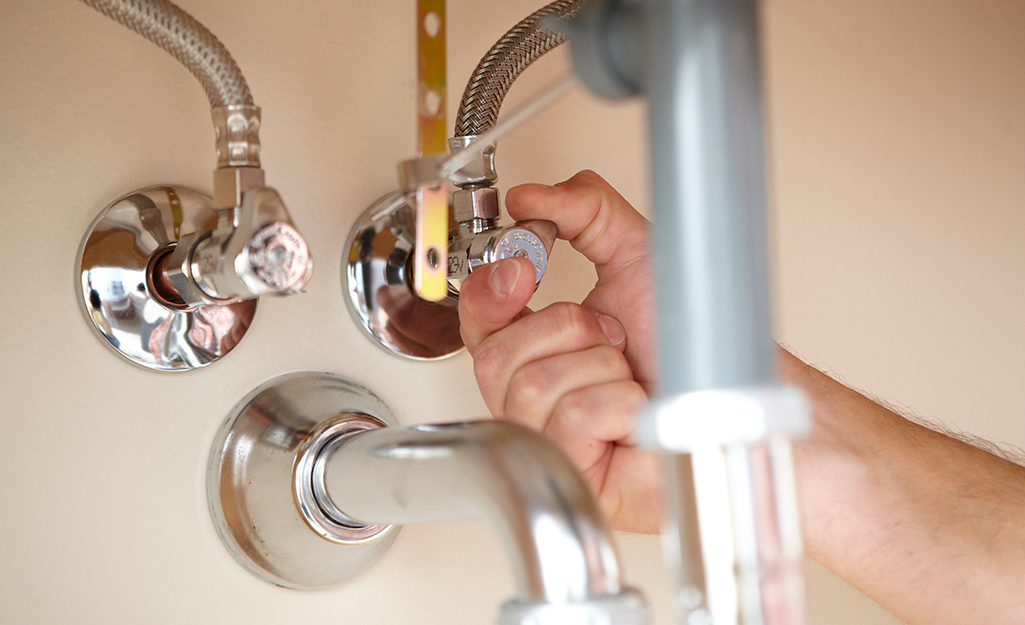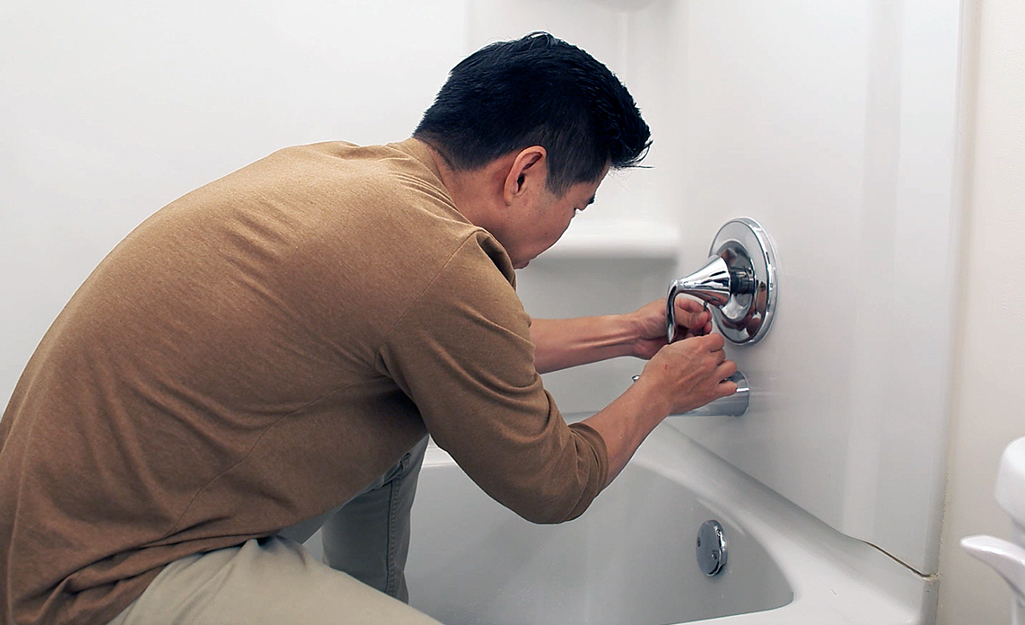We have found this great article on Should I Repair or Replace a Leaky Faucet? directly below on the web and believe it made good sense to write about it with you over here.

Leaking taps could appear like a minor inconvenience, yet their influence surpasses just the annoyance of the sound. From wasting water to sustaining unnecessary economic prices and wellness risks, disregarding a dripping tap can bring about various consequences. In this article, we'll look into why it's important to resolve this common family concern quickly and successfully.
Wastefulness of Water
Environmental Influence
Dripping faucets contribute dramatically to water wastefulness. According to the Epa (EPA), a single faucet leaking at one drip per second can lose greater than 3,000 gallons of water each year. This not only strains water sources but likewise affects ecosystems and wildlife dependent on them.
Financial Prices
Increased Water Bills
Past the environmental impact, leaking taps can inflate water expenses considerably. The collected waste over time converts into higher utility expenditures, which can have been avoided with prompt repair services.
Prospective Residential Property Damage
In addition, prolonged dripping can cause damage to fixtures and surface areas surrounding the tap. Water build-up can create discoloration, deterioration, and also structural concerns if left neglected, leading to added repair work prices.
Wellness Issues
Mold And Mildew and Mildew Growth
The consistent existence of wetness from a dripping tap develops a suitable atmosphere for mold and mildew and mildew growth. These fungi not only compromise interior air quality however also position health risks, particularly for individuals with respiratory system problems or allergies.
Waterborne Illness
Stagnant water in trickling faucets can become a breeding place for bacteria and various other virus, boosting the danger of waterborne illness. Impurities such as Legionella microorganisms flourish in stagnant water, possibly causing severe ailments when ingested or inhaled.
Do it yourself vs. Specialist Repair service
Benefits and drawbacks of DIY Repair Work
While some may attempt to deal with a leaking faucet themselves, DIY repair services come with their very own collection of difficulties. Without correct knowledge and devices, do it yourself attempts can exacerbate the concern or result in incomplete repairs, prolonging the issue.
Advantages of Hiring a Professional Plumber
Employing a professional plumber guarantees that the underlying reason for the leaking tap is dealt with properly. Plumbing technicians have the experience and devices to identify and repair faucet issues efficiently, saving time and minimizing the risk of additional damage.
Step-by-Step Guide to Dealing With a Dripping Tap
Devices Required
Before attempting to repair a dripping faucet, collect the required tools, consisting of a flexible wrench, screwdrivers, replacement parts (such as washers or cartridges), and plumber's tape.
Usual Faucet Issues and Their Solutions
Identify the type of tap and the certain concern triggering the drip. Usual troubles include worn-out washing machines, corroded valve seats, or damaged O-rings. Refer to supplier guidelines or on-line tutorials for step-by-step advice on repairs.
Preventive Measures
Routine Maintenance Tips
To stop dripping taps, execute routine upkeep such as cleaning aerators, examining for leakages, and changing worn-out parts immediately. Additionally, think about setting up water-saving gadgets or updating to more efficient components.
Importance of Prompt Repair Works
Dealing with trickling taps as soon as they're observed avoids additional water wastage and potential damages, ultimately saving both water and cash in the long run.
Influence On Building Worth
Assumption of Well-Maintained Home
Preserving a building in good condition, consisting of addressing maintenance concerns like trickling taps, enhances its regarded value and worth amongst potential purchasers or tenants.
Impact on Resale Value
Characteristics with properly maintained plumbing components, including taps, command greater resale values in the property market. Resolving trickling taps can add to a favorable perception throughout building examinations and negotiations.
Ecological Obligation
Specific Payment to Conservation
Taking responsibility for taking care of leaking taps aligns with wider efforts towards water conservation and environmental sustainability. Every individual's actions collectively make a considerable effect on maintaining precious resources.
Lasting Living Practices
By focusing on prompt repairs and adopting water-saving routines, individuals contribute to sustainable living techniques that benefit both existing and future generations.
Conclusion
Dealing with a leaking tap surpasses mere comfort; it's a crucial step toward conserving water, lowering financial expenses, and guarding wellness and property. Whether through DIY repairs or expert aid, acting to take care of trickling taps is a small yet impactful way to promote liable stewardship of sources and contribute to a healthier, a lot more lasting future.
How to Fix a Leaky Faucet: Step-by-Step Repair Guide
A leaky faucet may seem like a simple annoyance, but if it's not fixed promptly, that leak could cost hundreds to potentially thousands. From water damage to mold, mildew, and high water bills, even a tiny leak can be catastrophic if left unattended. Damage like this can even affect the overall value of your home, so it's important to take the right approach for leaky faucet repair. You may need the help of a plumber in some cases, but we've got a few tips you can try on how to fix a leaky faucet before calling the pros.
Four Faucet Types
When you're learning how to fix a leaky faucet, the first step is knowing what kind of faucet you're working with! There are four common types.
Cartridge Faucets
Cartridge faucets come in one- or two-handled varieties. In one-handled cartridge faucets, hot and cold water combines in a single cartridge. In the two-handled versions, hot and cold water are controlled separately and mixed in the faucet.
Ball Faucets
Ball faucets have a single lever you push up and down to adjust the pressure and rotate to change the temperature. A slotted metal ball controls the amount of water allowed into the spout.
Compression Washer Faucets
They're the oldest type of faucet, but they're still used in many homes — especially older ones. Compression faucets have two separate handles that, when turned, raise or lower the washer that seals a water valve. This valve stops water from flowing through the faucet when it is turned off.
Disc Faucets
Disc faucets rarely need to be repaired due to their maintenance-free design. The water flow is controlled by two discs — the upper one raises and lowers against a fixed lower disc, creating a watertight seal. If your disc faucet starts leaking, you may need to replace the seals or clean residue buildup from the inlets.
Fixing a Leaky Faucet
Step 1: Turn Off the Water
Whether you're learning how to fix a leaky bathtub faucet or how to fix a leaky kitchen faucet, always turn off the water supply to your working area when you're fixing a leak. The last thing you want is a flood added to your list of things to fix.
Look for the shutoff valves below your sink or around the tub and turn them clockwise to stop the water flow. If your faucet doesn't have shutoff valves, you may need to turn off the water for the whole house. Check to make sure it's off by turning the faucet on. If nothing comes out, you're ready to start the repair.
Step 2: Take Apart the Faucet
How you disassemble your faucet depends on the type of fixture you have. You can use a flathead screwdriver to remove the caps on top of the handle or handles for cartridge and compression faucets. Inside, you should see handle screws. Unscrew these with a screwdriver to remove the handle.
Disc- and ball-style faucets will typically have an inlet screw near the handle, and removing that will reveal the interior of the faucet.
Detach the Valve Stem
For cartridge- and compression-style faucets, you'll see the inner valve stem or cartridge once you remove the faucet handles. If you have a compression faucet, unscrew the brass valve stem. If you have a cartridge faucet, pull out the cartridge. If your cartridge has been in place for a while, it may require some tools or extra force to remove it due to mineral deposits.
Examine and Replace Parts
Once you've removed the parts, check them out to confirm what needs to be replaced. You may see corroded rubber washers, O-rings, stems, or cartridges. On a ball-style faucet, check the seats and springs for damage.
If you need to repair a leaky disc faucet, check the inlet and seals on the lower disc.
Once you determine what parts must be replaced, visit your local hardware store. Bring the damaged parts with you to ensure you can purchase the correct components to replace them.
Clean Valves and Faucet Cavity
If you've removed a stem or cartridge, you may notice mineral buildup in the faucet's threads. Use white vinegar to clean the valve seat by soaking it for a few minutes, then scrub it away with a soft toothbrush and rinse with warm water. You can also clean the interior of the faucet in the same way.
Reassemble the Faucet
Once your faucet is cleaned and the required parts have been replaced, it's time to reassemble it. Put the pieces back together and slowly turn the water supply back on. Doing this slowly is crucial because too much initial water pressure can damage the new hardware you've just installed.
https://homewarranty.firstam.com/blog/how-to-fix-leaky-faucet

We had been made aware of that article on How to Fix a Dripping or Leaky Faucet through a friend on a different site. Loved our entry? Please share it. Help someone else find it. Thanks for being here. Revisit us soon.